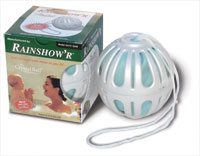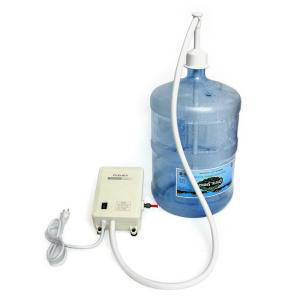|
Home | Privacy Policy | Contact Us | Return Policy |
|||||||||||||||||||||||||||||||||||||||||||||||||||||||||||||||||||||||||||
|
SUNUS, LEVELUK R, K8, Leveluk DXII, Leveluk JRII, Leveluk SD501, SD501 Platinum, SUPER501, Leveluk SD501U. |
|||||||||||||||||||||||||||||||||||||||||||||||||||||||||||||||||||||||||||
|
watersafe®
|
||||||||||||||||||||||||||||||||||||||||||||||||||||||||||||||||||||||||||
|
|
|
|
$24.95
Shipping Information
The Watersafe® Well Water Test Kit was specifically designed to help you test quickly and easily for the most common contaminants found in private well water, including: iron, copper, lead, bacteria, pesticides, nitrates, nitrites, chlorine, pH and hardness.
We often hear our customers say they have good well water, but this is often an assumption. If your home draws from private well water, regular testing (recommended yearly or more) is the only way to ensure the purity of your water and safeguard the health of your family. You will be responsible for testing your drinking water not the city, and Watersafe® Well Water Test Kit is kit can help you.
Our Watersafe® Well Water Test Kit is an affordable, easy-to-use and accurate test to determine the safety of your well water! The Watersafe® Well Water Test Kit is an essential addition to every home drawing from private water wells, giving you lab-quality results right in your own home.
The EPA recommends testing your private well water at least once a year, so don’t wait! The quality of underground water can change due to various reasons. Put your mind at ease and help secure your family’s health with a Watersafe® Well Water Test Kit.Water Test Desired Values
EPA maximum contaminant levels / guideline standards
Bacteria None Lead Below 15 ppb Pesticides (atrazine) Below 3 ppb Pesticides (Simazine) Below 4 ppb Total Nitrate/Nitrite Below 10.0 ppb Nitrate Below 1.0 ppb Total Chlorine Below 4 ppb pH 6.5 to 8.5 Total Hardness 50 ppm or less Copper 1.3 ppm Iron 0.3 ppm Watersafe® Well Water Test Kit Instructions are included with the test kit, but before you begin your testis check the contents of your test kit
- One Bacteria Test Vial
- One Lead / Pesticide Test Packet
- One Nitrate / Nitrite Test Packet
- One pH / Hardness / Chlorine Test Packet
- One Copper Test Packet
- One Iron Test PacketKeep test out of reach of children or pets. Do not ingest anything from this kit.
Do not drink samples used for testing.
Store and use at room temperature (60-86 F).
Do not use with hot water or water containing bleach or detergents.
Do not re-use any part of the test kit. Do not open packets or vial until you are ready to perform the test. Read and follow all instructions carefully.
Here are some important information and links to some of the test instructions:
-
Bacteria contaminated water may not smell or taste bad. Bacteria in drinking water contaminated by human waste has been linked to illnesses such as typhoid, dysentery, cholera, and hepatitis. When an area is flooded due to persistent rains, the sewage treatment systems can get overwhelmed and contaminate the drinking water supply. To learn more and read the [Bacteria Test Instructions]
-
Lead which causes a wide variety of developmental , neurological and kidney problems can be found in water. Some city water treatment facilities have lead in valves, gaskets, distribution mains and service lines. As you might expect some older homes have original lead plumbing, but surprisingly, many new homes also pose a risk, as excessive leaching from leaded solder and brass fixtures, such as faucets, can happen for the first year. [Lead Test Instructions]
-
Pesticides have been discovered in every large watershed in the US and in a large percentage of groundwater wells and have been l
inked
to increased cancer rates. To learn more
and read the [Pesticide
Test Instructions]
-
Nitrates/Nitrites although low levels of nitrates may occur naturally in water, sometimes higher levels, which are potentially dangerous to infants, are found in water. Nitrates may cause methemologlobinemi, a condition known as “blue baby” and other developmental problems. In 1992, when the survey was released, some 22,500 infants drinking domestic well water were estimated to be exposed to levels of nitrates exceeding the EPA safe drinking water limits; for community systems, the number was estimated to be 43,500 infants. Sources of nitrogen and nitrates may include runoff or seepage from fertilized agricultural lands, municipal and industrial waste water, refuse dumps, animal feedlots, septic tanks and private sewage disposal systems, urban drainage and decaying plant debris. Geologic formations and direction of ground water flow also may influence nitrate concentration.
-
Chlorine,
used for disinfection, can react with
organic matter to form cancer-causing
trihalomethanes.
By-products can increase cancer risk;
bad taste and smell.
Chlorine Test Instructions
-
pH- Knowing the pH level of your water can help you prevent secondary effects - If the acidity of your water is too high, corrosion can leach out lead from pipes and plumbing as well as damage your water supply system and water heater. pH test instructions
-
Hardness. Hard water is not a health hazard; in fact hard water is an excellent source of dietary calcium and magnesium. The problem with hard water is that lime scale builds up in pipes causing corrosion, reduce the efficiency of hot water heaters, increase water consumption when taking a bath (to remove soap), leave spotting and filming on dishes/cookware. If you have water hardness problems visit our Magnetizer Hard Water Conditioner page for the best solution to water hardness problems. Hardness test instructions







